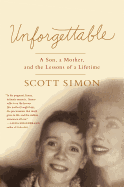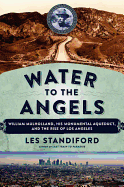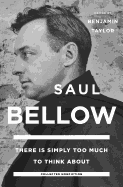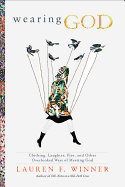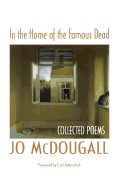 |
| photo: Sara Huffman |
Chris Cander is a novelist, children's book author, freelance writer and teacher for Houston's Writers in the Schools program, which engages children in the pleasure and power of reading and writing. Her novel 11 Stories was included in Kirkus's best indie general fiction of 2013. Her most recent novel is Whisper Hollow, published by Other Press in March 2015. Cander well knows that the pen is mightier than the sword, but she's willing to wield one of those, too: a former fitness competitor and model, she currently holds a second dan in taekwondo.
On your nightstand now:
An embarrassment of riches! On the research stack are: What to Listen for in Music by Aaron Copland, The Gates of November by Chaim Potok, Johannes Brahms by Jan Swafford and A Practical Guide to Solo Piano Music by Trevor Barnard. For pleasure, there are: Skinny Legs and All by Tom Robbins, Painted Horses by Malcolm Brooks, Spring Snow by Yukio Mishima, The Ogre by Michel Tournier and The Moons of Jupiter by Alice Munro. Finally, because I still read to my children: The Complete Grimm's Fairy Tales, Italian Folktales by Italo Calvino and Ship of Theseus by V.M. Straka.
Favorite book when you were a child:
Island of the Blue Dolphins by Scott O'Dell taught me that literature is the most powerful form of transportation. I was gripped by Karana's brave plight, her desires and her determination. As I read, I can remember being simultaneously drawn into Karana's story, and inspired to write my own. But even before O'Dell was Mr. Pine's Purple House by my now-friend Leonard Kessler, the first book I ever truly loved. In the book, Mr. Pine wanted to make his little house on Vine Street stand out, but every time he planted a bush or tree or something else, the neighbors copied him. He finally decided to paint his house purple, and convinced all the would-be copycats to choose their own colors. Learning that lesson--pursuing individuality within community--has served me long and well.
Your top five authors:
Charles Baxter, Annie Proulx, Gabriel García Márquez, Harriet Doerr and Marilynne Robinson.
Book you've faked reading:
I haven't actually faked reading the appallingly long list of books that I haven't read, but I'm very conscious of them. In my novel 11 Stories, I "admitted" to a few in the voice of one of my characters, Lenny Dreyfus, an award-winning author, who said, "I didn't want people to know what I didn't really know. Hell, I didn't even read half the books that writers are supposed not to only have read but to cherish. Want to know something? I never read Moby-Dick. Or Huckleberry Finn or Crime and Punishment or The Trial. The list of books from which I should be able to pull meaningful quotes to enrich my conversations is a hell of a lot longer than the list of books from which I can."
In spite of the fact that I spend more money on books than clothes, and try to read 50 or so books a year, I feel like I'll never catch up.
 Books you're an evangelist for:
Books you're an evangelist for:
Last year I fell in love with Anthony Doerr's All The Light We Cannot See, Joseph Boyden's The Orenda and Anthony Marra's A Constellation of Vital Phenomena. I gave copies as gifts and insisted that my friends read them. I've also been known to press into hands Peace Like a River by Leif Enger, City of Thieves by David Benioff and Fall on Your Knees by Ann-Marie MacDonald.
Book you've bought for the cover:
Browsing the new releases at Brazos Bookstore last fall, I bought The Dinner by Herman Koch because its cover was compelling. Happily, the story was, too.
Book that changed your life:
During a very unhappy time, Charles Baxter's short story collection A Relative Stranger found its way to me. Reading these stories, which uniquely depict universal and unassailable forms of despair, as well as the relief from it, I was transported--breathtaken--back to life.
Favorite line from a book:
From Beryl Markham's West with the Night: "There are all kinds of silences and each of them means a different thing. There is the silence that comes with morning in a forest, and this is different from the silence of a sleeping city. There is silence after a rainstorm, and before a rainstorm, and these are not the same. There is the silence of emptiness, the silence of fear, the silence of doubt. There is a certain silence that can emanate from a lifeless object as from a chair lately used, or from a piano with old dust upon its keys, or from anything that has answered to the need of a man, for pleasure or for work. This kind of silence can speak. Its voice may be melancholy, but it is not always so; for the chair may have been left by a laughing child or the last notes of the piano may have been raucous and gay. Whatever the mood or the circumstance, the essence of its quality may linger in the silence that follows. It is a soundless echo."
Which character you most relate to:
The eponymous "Writer Waiting" in Shel Silverstein's poem from his collection Falling Up: "Oh this shiny new computer-- There just isn't nothin' cuter/... / It can edit and select,/ It can copy and correct,/ So I'll have a whole book written by tonight/ (Just as soon as it can think of what to write)."
Book you most want to read again for the first time:
Round the Bend by Nevil Shute, which I read when I was a head-in-the-clouds high school student. It's a compelling, mystical story about an Englishman who starts up an air charter company in Bahrain and his chief mechanic who finds spiritual value in technical precision and becomes a revered religious figure. It's about airplanes, life and opening oneself up to the possibility of the divine.
Book Brahmin: Chris Cander





 Books you're an evangelist for:
Books you're an evangelist for: Published in 1922, Lady into Fox was the first of British writer David Garnett's novels to be released under his own name. It tells the story of Richard Tebrick and his wife, Sylvia Tebrick, who abruptly turns into a fox while on a walk in the woods. At first, Sylvia continues to act like a human being, but it's not long before she behaves more and more like a wild animal. The book went on to win both the James Tait Black Memorial Prize and the Hawthorne Prize.
Published in 1922, Lady into Fox was the first of British writer David Garnett's novels to be released under his own name. It tells the story of Richard Tebrick and his wife, Sylvia Tebrick, who abruptly turns into a fox while on a walk in the woods. At first, Sylvia continues to act like a human being, but it's not long before she behaves more and more like a wild animal. The book went on to win both the James Tait Black Memorial Prize and the Hawthorne Prize.



